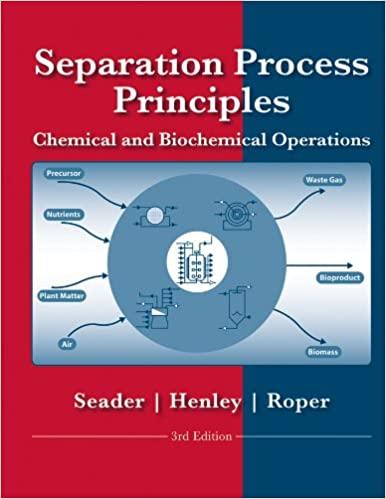In the steady-state TMB run of Example 15.22, results for Example 15.21, from application of the steady-state,
Question:
In the steady-state TMB run of Example 15.22, results for Example 15.21, from application of the steady-state, local-equilibrium TMB model, were used with a β of 1.05 to establish flow rates of the raffinate, extract, makeup desorbent, recirculation, and solid particles so as to approach a perfect separation between fructose and glucose. While the separation was not perfect, it was reasonably good. What results are achieved in Example 15.22 if the overall mass-transfer coefficients approach infinity?
Example 15.21
Fructose (A) is separated from glucose (B) in a four-section SMB unit. The aqueous feed of 1.667 mL/minute contains 0.467 g/minute of A, 0.583 g/minute of B, and 0.994 g/minute of water. For the adsorbent and expected concentrations and temperature, Henry’s law holds, with constants KA = 0.610 and KB = 0.351 for fluid concentrations in g/mL and loadings in g/mL of adsorbent particles. Water is assumed not to adsorb. Estimate operating flow rates in mL/minute to achieve a perfect separation of fructose from glucose using a TMB. Note that extract will contain fructose and raffinate will contain glucose. Conversion of the results to SMB operation will be made in Example 15.22.
Step by Step Answer:

Separation Process Principles Chemical And Biochemical Principles
ISBN: 9780470481837
3rd Edition
Authors: By J. D. Seader, Ernest J. Henley, D. Keith Roper





